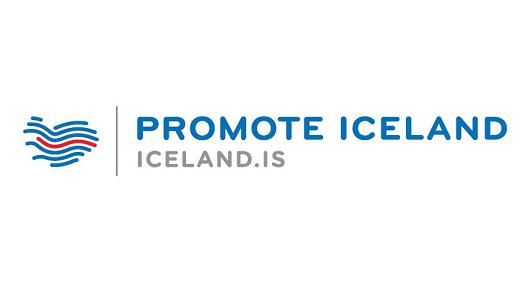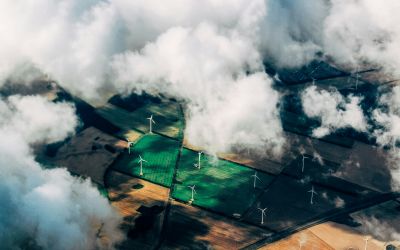Iceland: reducing the world’s carbon footprint
Climate Action spoke to Thordur Hilmarsson, Director of Foreign Direct Investment at Promote Iceland, about clean energy, carbon reduction and green business

Iceland is a global leader in clean energy generation, carbon reduction and green business and Climate Action spoke to Thordur H. Hilmarsson, Director of Foreign Direct Investment at Promote Iceland, to find out how investors and businesses are benefiting and what the country is doing to enable such growth.
Can you tell us a bit about Invest in Iceland?
The central location of Iceland between North America and Europe, the availability of secure and renewable electricity in addition to many other factors such as a pro-business environment and availability of land make Iceland an attractive location for many types of industries. Invest in Iceland is the information and services centre for foreign investors and businesses interested in exploring how this value proposition can be of value to their business.
Can you expand on the data centre opportunities in Iceland and how is this offering cost savings and renewable energy solutions for international companies?
Minimising the carbon footprint of data while reducing cost is a challenge that Nordic Iceland rises to and companies such as BMW are already leveraging on this opportunity. 100 per cent of the electricity on the Icelandic transmission and distribution grid is green, produced harnessing of geothermal resources or the power of Iceland‘s glacial rivers. The electricity is not only renewable but also highly cost competitive and available via long term contracts that ensure predictability in the operations. Because of the cool oceanic climate of Iceland data centers can use ambient cooling year round. Cooling is the largest non-value adding factor in the power consumption so this is important.
Iceland is connected to both North America and Europe with high bandwidth and relatively low latency submarine fiber cables. Both the overseas connection and the backhaul is redundant.
Can you tell us a bit about how Iceland is reducing its GHG emissions and decreases its CO2 exposure?
With 85 per cent of the country‘s primary energy needs met by renewable hydro and geothermal resources, Iceland is a world leader in renewable energy. Iceland‘s energy use per capita is also among the highest in the world as over 80 per cent of all electricity generated is sold to energy intensive industries. Today Iceland has hydroelectric power stations with a total installed capacity of nearly 1986 MW and geothermal power stations with a total installed capacity of 665 MW.
Today almost 90 per cent of Iceland‘s houses and buildings are heated by natural hot water
Utilisation of geothermal resources for space heating started for real in the 1930s but the effort was greatly accelerated by the global oil crisis of the early 1970s. Today almost 90 per cent of Iceland‘s houses and buildings are heated by natural hot water and the geothermal water is also used for melting snow, outdoor swimming pools, greenhouses and fish farming to give some examples.
Renewables for heating in Iceland is already saving 7 per cent of GDP or equivalent 3000 US $ per capita every year this is stated in the latest newsletter published by Geothermal ERA-NET.
The energy situation in Iceland is unique because all electricity is produced using renewable resources and around 90 per cent of space heating in the country is also powered by renewable sources. Opportunities for reducing GHG emissions lie therefore primarily in the transport sector. There are many initiatives ongoing in this sector in Iceland, both when it comes to transport on land and on sea, and the government of Iceland is committed to utilising the opportunity inherent in our energy situation for even further reducing emissions.
In July 2014 Iceland and China entered into a free trade agreement. How will this help boost climate action projects?
This extensive FTA, effective as of July 2014, offers unprecedented opportunities for North American and European companies to gain a foothold in one of the largest markets in the world. This includes material such as polysilicon, produced from silica or quartz powered by Iceland’s renewable energy resources, and used to produce further renewable energy as solar panels. Carbon fibers, used to reduce consumption of fossil fuel by reducing the weight of vehicles or for windmill generating green power, do also fall under the FTA.
Under the terms of the new FTA, there are zero tariffs on the vast majority of products both exported from, and imported to, China. This includes all industrial products exported from China to Iceland—or 99 per cent of the current export market—as well as any Icelandic products under the 7,830 tariff lines, which currently accounts for 82 per cent of the country’s exports to China.
Even a quick glance at EU/US customs duties on products exported to China reveals the immediate benefits enjoyed by companies based in Iceland
Even a quick glance at EU/US customs duties on products exported to China reveals the immediate benefits enjoyed by companies based in Iceland: Carbon fibres and any fabric from these fibres incur 17.5 per cent customs from EU/US exporters, fresh and/or cool fish incurs 10-12 per cent customs, and poultry 20 per cent customs. None of these products would face any tariffs if exported from Iceland.
Iceland has topped the Global Peace Index for the last two consecutive years. How has this helped to boost clean energy investment in the country?
Safety and stability are important factors when investors choose where to locate new facilities. This is especially important for sensitive operations such as data centers and industries that are sensitive for disruption such as energy intensive industries.
At COP21 in Paris this year, governments are due to agree a landmark new global and binding climate deal. What opportunities could this present to Invest in Iceland?
The climate change presents no opportunities as such but increased international awareness of the problem and the importance of active measures to reduce the emissions of greenhouse gases does. Both companies and consumers are increasingly aware of the origin of the energy needed to provide the required goods and services. Iceland enjoys the unique situation that all the electricity produced and fed onto the national transmission grid is from renewable resources, hydro, geothermal and wind. This means that regardless of where in Iceland new companies decide to locate, they can only buy renewable energy.





_400_250_80_s_c1.jpg)

